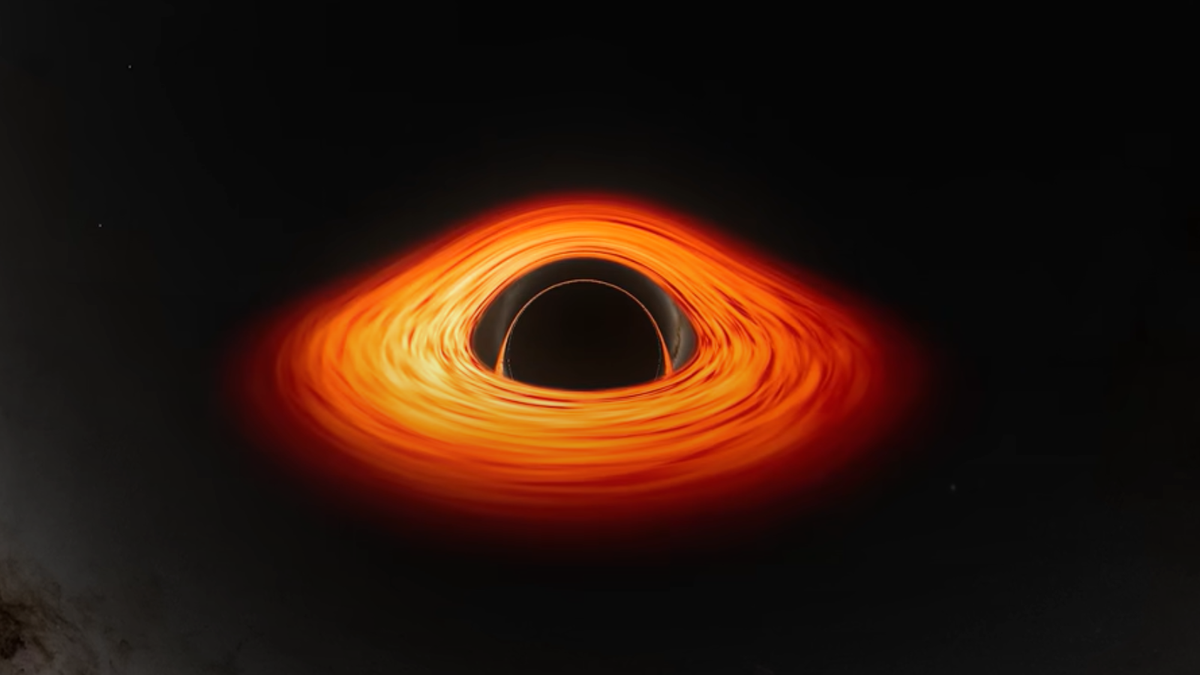Have you ever wondered what awaits you if you fall into a black hole? Thanks to a new visualization created by NASA, you can now experience this cosmic phenomenon from the “comfort” of your own screen. Prepare to have your mind bent as we delve into the abyss!

A Journey to the Point of No Return: Falling into a Supermassive Black Hole
The simulation, created to celebrate Black Hole Week, takes viewers on a one-way trip towards the event horizon of a supermassive black hole. The event horizon is a boundary beyond which not even light can escape the black hole’s immense gravity. Crossing this threshold marks the point of no return, a point from which no information can ever be retrieved by an outside observer.
The simulation depicts a black hole with a mass 4.3 times that of our sun, similar to Sagittarius A*, the supermassive black hole residing at the heart of our Milky Way galaxy. Interestingly, according to the simulation’s creator, Jeremy Schnittman, a NASA astrophysicist, falling into a larger black hole is preferable. Stellar-mass black holes, which are much smaller, have stronger tidal forces that would tear an object apart before it even reaches the event horizon.
As we hurtle towards the black hole at nearly light speed, the view becomes increasingly dominated by its immense presence. The light from surrounding matter intensifies, and the warping effects of gravity on spacetime become evident as the background stars appear distorted. A ring of light, formed by the extreme curvature of space around the black hole, becomes visible. Before reaching this point, we encounter a swirling disk of hot gas, the accretion disk, that fuels the black hole.
The simulated black hole’s event horizon is a vast expanse, roughly 16 million miles wide, which is about 17% of the distance between Earth and the Sun. After a simulated journey of 3.5 hours, we reach this cosmic boundary. This marks the last point where a distant observer could see us. From their perspective, our image would forever be frozen at the edge of the event horizon.
Crossing the Event Horizon: A One-Way Trip
Crossing the event horizon is a point of no return. Beyond this point lies the singularity, an infinitely dense point at the center of the black hole where our current understanding of physics breaks down. While the simulation doesn’t depict our demise upon reaching the singularity, it does show us experiencing spaghettification – the intense tidal forces stretching us into a long, thin strand – just before reaching that point.
A Glimpse Around the Event Horizon: Avoiding the Inevitable
A second simulation offers a less perilous option – a daring slingshot maneuver around the event horizon. This six-hour journey brings us close to the black hole’s boundary without actually crossing it. However, due to the warping of spacetime, upon returning to our hypothetical mothership, we would find that our fellow astronauts had aged an additional 36 minutes compared to us! Schnittman notes that for rapidly rotating black holes, like the one depicted in the movie Interstellar, this time difference could be even more extreme.
A Powerful Tool: Unveiling the Mysteries of Black Holes
The simulations were created using the Discover supercomputer at NASA’s Center for Climate Simulation. The process generated a staggering 10 terabytes of data, equivalent to roughly half of the text found in the Library of Congress! These simulations offer a valuable tool for scientists, helping them visualize and understand the complex physics around black holes.
A Journey Through Black Hole Week: Stretching Our Minds
These captivating simulations mark the beginning of Black Hole Week, a week dedicated to exploring these fascinating cosmic entities. So buckle up and prepare to have your mind stretched (in a good way) as we delve deeper into the mysteries of black holes!

















